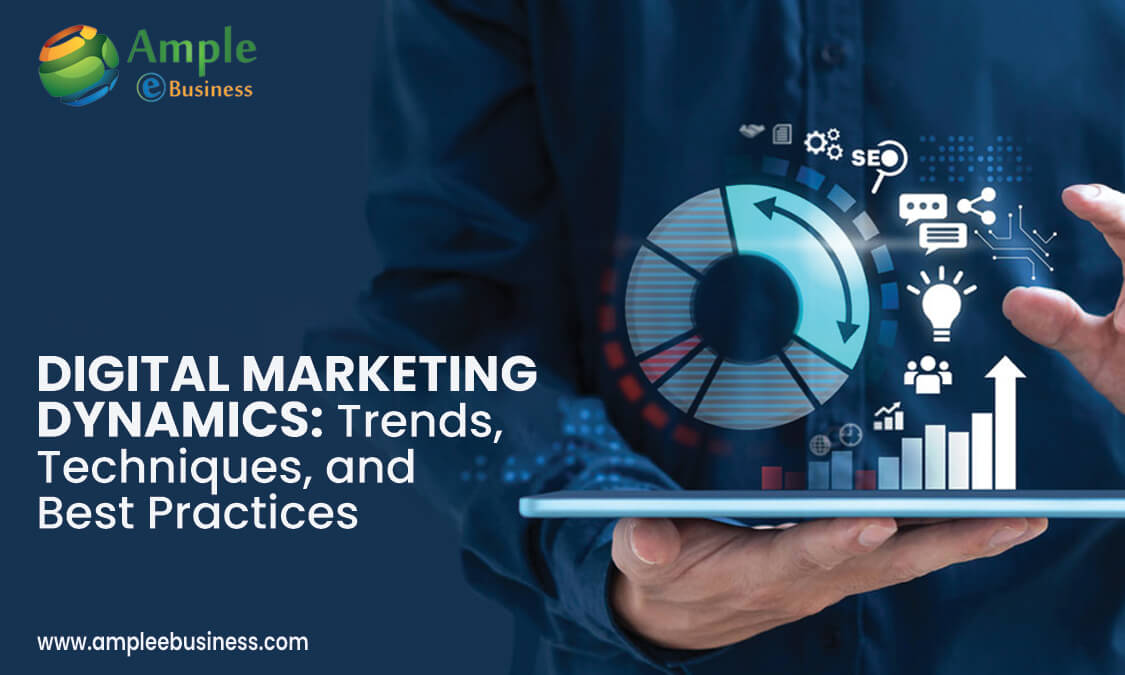
Digital marketing: what is it?
The use of digital channels to market goods and services to customers is referred to as “digital marketing.” Websites, mobile devices, social media, search engines, and other channels with a similar function are used in this kind of marketing. With the introduction of the internet in the 1990s, digital marketing gained popularity.
Digital marketing is frequently seen as an additional strategy by businesses to reach customers and comprehend their behavior. It shares some of the same principles as traditional marketing. Traditional and digital marketing strategies are frequently combined by businesses. However, implicit bias is one of the unique challenges facing digital marketing.
What does a company mean by “digital marketing”?
Digital marketing is essential for your brand’s awareness and business at this point. Every other brand seems to have a website, and those that don’t at least have a social media presence or a digital advertising strategy. Consumers now expect and rely on digital content and marketing as a way to learn about brands. Because there are so many options with digital marketing, you can get inventive and test out different marketing strategies on a tight budget.
In general, using a variety of digital strategies and channels to engage with customers online, where they spend the majority of their time, is what is meant by the term “digital marketing.” The most effective digital marketers have a clear understanding of how each campaign supports its main objectives. Marketers can support a larger campaign through the available free and paid channels, depending on the objectives of their marketing strategy.
What makes digital marketing so crucial?
Digital marketing enables you to target the customers most likely to purchase your goods or services and reach a wider audience than you could with conventional techniques. Additionally, it allows you to gauge success on a daily basis and make adjustments as necessary, and it is frequently more affordable than traditional advertising.
1. You can concentrate your efforts only on customers who are most likely to buy your product or service
You have a limited amount of control over who sees an advertisement that you place on television, in a magazine, or on a billboard. Of course, it’s largely a guesstimate to measure certain demographics, such as the typical magazine readership or the demographic of a specific neighborhood.
With the help of personalized and highly effective marketing messages, you can locate and target a very specific audience using digital marketing.
Use social media targeting, for instance, to display advertisements to a specific audience based on factors like age, gender, location, interests, networks, or behaviors.
2. It is more affordable than outbound marketing strategies
By tracking daily campaign performance, you can identify which channels are working well and which aren’t, which can help you optimize your campaign budgets for a high return on investment. Traditional forms of advertising cannot be said to be the same. No matter how well your billboard performs, even if it doesn’t convert, the cost remains the same.
Additionally, you have total control over where you choose to spend your money with digital marketing. Instead of paying for PPC campaigns, you might invest money in design software to produce Instagram content that converts well. You can continuously pivot with a digital marketing strategy, avoiding wasting money on ineffective channels.
3. You can compete with bigger brands thanks to the level playing field created by digital marketing within your sector
If your company is small, it will probably be challenging for you to compete with the major brands in your sector, many of which have millions of dollars to spend on advertising. Fortunately, there are many chances for strategic digital marketing initiatives to outrank the major players.
For instance, long-tail keywords can be used to produce high-quality content that appears in search results. The biggest brand doesn’t matter to search engines; what matters is that they give priority to content that appeals to their intended audiences.
4. Digital advertising can be quantified
Traditional advertising has many limitations, but it can be useful for certain objectives. One of the main advantages of digital marketing is that it can provide you with a complete picture of all the metrics that are important to your business, such as impressions, shares, views, clicks, and time on the page.
Digital marketing, in contrast to the majority of offline marketing initiatives, enables marketers to view precise results in real time. If you’ve ever placed an advertisement in a newspaper, you know how challenging it is to gauge the number of readers who actually turned to that page and read the advertisement. There is no surefire way to determine whether that advertisement contributed to any sales at all.
Trends in Digital Marketing
1. Personalization: Consumers anticipate personalized experiences across all channels, including digital marketing. Businesses are adjusting their marketing strategies to deliver personalized content, recommendations, and offers based on customer preferences and behaviors by utilizing data-driven insights and technologies.
2. Video marketing: As a potent content format, video continues to rule. Businesses are using video marketing to engage and connect with their audiences thanks to the growth of platforms like YouTube, TikTok, and Instagram Reels. Short-form video content, live streaming, and interactive videos are becoming more common.
3. Influencer Marketing: Using well-known individuals and social media influencers, brands can now effectively reach their target audience through influencer marketing. Businesses can access influencers’ established communities, establish credibility, and increase brand recognition by working with them.
4. Voice Search Optimisation: Because voice assistants like Siri, Alexa, and Google Assistant are becoming more popular, optimizing voice search is crucial. To respond to voice search queries, businesses are modifying their SEO strategies to incorporate long-tail keywords and conversational language.
5. Chatbots and AI: Artificial intelligence (AI)-powered chatbots are being used to automate customer interactions and offer real-time support. Businesses are incorporating chatbots into their messaging services and websites to provide individualized and effective customer service, answer questions, and speed up transactions.
6. Social commerce: As e-commerce features are increasingly incorporated into social media platforms, businesses are now able to sell goods and services to customers without ever leaving the platform. Social commerce makes shopping easier, makes it easier to find products, and encourages sales.
7. User-Generated Content (UGC): As more people trust peer recommendations and experiences, UGC has become increasingly popular. Building trust, authenticity, and social proof can be achieved by encouraging customers to create and share content about a company or its products.
Conclusion
In conclusion, the dynamics of digital marketing are constantly changing due to technological advancements, shifting consumer behavior, and shifting market trends. Business owners who want to succeed in this fast-paced environment need to keep up with the latest trends, use efficient strategies, and adhere to best practices.
As companies work to deliver tailored experiences and content that connect with specific customers, personalization has emerged as a key trend. The popularity of video marketing is still growing, attracting viewers and keeping them interested on a variety of platforms. With the help of influencer marketing, brands can connect with and reach their target audience by leveraging the authority of well-known individuals. Due to the increasing use of voice assistants, businesses must now prioritize voice search optimization in their SEO plans.

